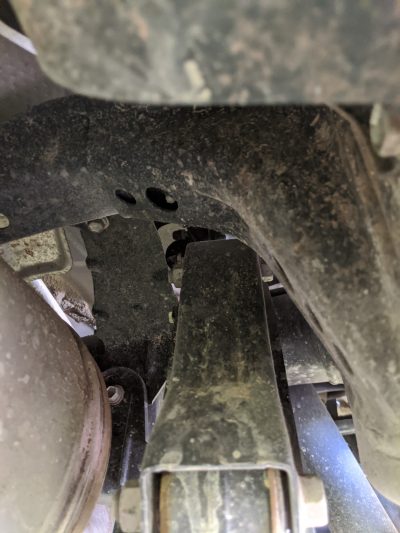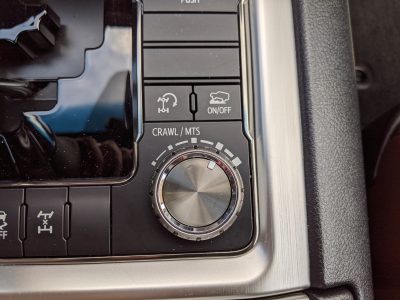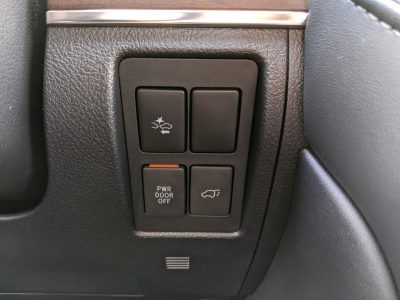What can be said about the 200 series Land Cruiser that hasn’t already been said? It’s been around since 2008 and has only had a few meaningful changes since then.
For 2020, there is an all new Heritage Edition that removes the rear seats and center armrest cooler and adds a roof rack, BBS forged wheels, and special badges. Other than that, little has changed from the 2019 model year.
For our review, Toyota sent us a base model Land Cruiser for a week. Keep in mind the base model Land Cruiser starts at over $85,000 and there is only one package available along with a variety of accessories, so you’re still getting nearly all the features at entry.
Platform
World renowned for its incredible reliability and revered in the overlanding market as the holy grail of 4×4’s, the Land Cruiser has built a strong following of dedicated owners and enthusiasts. Of course, this is all for good reason.
Overview Video
Land Cruisers of old were incredibly simple machines, which is what helped make them so reliable. The 2020 Land Cruiser has come a long way, but still strives for that simplicity. It is based on a very stout body on frame chassis with a big V8, eight-speed automatic transmission, and a transfer-case with low-range gearing. While there are electronic controls for various systems, there are no torque vectoring or clutch-based systems in the drivetrain. This means that power is run through shafts and gears which aren’t as likely to slip and overheat when compared to modern AWD systems. The limited slip center differential is a gear driven Torsen style setup with an electronic locking feature. It’s clear that failure points have been minimized.
Despite its simplicity, the Land Cruiser has some ingenious technology, like the KDSS (Kinetic Dynamic Suspension System) which increases stability on-road and increases articulation off-road. It also uses many required safety features to improve off-road capability. For example, the ABS is used to help transfer power side to side, which is common in vehicles today, but it is also used in Crawl Control to provide for the best traction and to maintain the set speed.
Off-Road Driving
The US market has exploded in the past decade with a variety of factory-equipped capable off-roaders. Many of the newcomers fill a niche like the Ford Raptor for desert running. Others like the Ram Power Wagon have been all-purpose icons for over 50 years. The Land Cruiser falls into the latter category, which landed on US soil in 1958.
What this means for off-roading is that there are better vehicles out there than the Land Cruiser for nearly every given rough-terrain situation. What the Land Cruiser brings that the others don’t is a very comfortable and reliable vehicle on any terrain. The Jeep Wrangler is the best rock crawler on the market, but at high speeds off-road and highway driving, it’s subpar.
The Raptor is an amazing desert runner but floats on road. In the Land Cruiser, on-road stability is great when compared to other vehicles this size and weight. Off-road it’s smooth, composed, and quiet. The hardest part for a journalist to judge is how a vehicle holds up over decades of use, for that we must look at its history and heritage. The Land Cruiser excels in this area as well, and that is why overlanders and government organizations love them.
Off-Roading Video
Traveling at high speed over gravel and dirt roads in the Land cruiser is a breeze. The suspension has plenty of travel and eats up the bumps with ease. When hitting the large moguls, the suspension gets very stiff near the end of its travel without bottoming out, which is just what you want to prevent damage from harsh jolts. The only thing that could use some improving is the way the transmission acts for sportier driving. The torque converter lockup is never noticeable and it’s hard to tell when it is locked. It’s clear that in the US market this vehicle is designed for comfort on any terrain. Pushing the ECT power button helps give that sportier feel, but it could use some more tuning for off-road driving.
When driving at lower speeds off-pavement, the articulation is much better than expected. KDSS works extremely well in keeping all wheels on the ground as much as possible. Along with the great articulation, A-TRAC helps maximize traction. A-TRAC applies the brakes to the spinning wheels which transfers power side to side on the front and rear axles.
When getting into really technical terrain, Crawl Control is another feature that makes off-roading a non-event in the Land Cruiser. Ideally an off-road vehicle will have differential locks on both the front and rear axles to provide the best traction possible. To compensate for not having those, Toyota has developed Crawl Control. Crawl Control is an off-road cruise control system that also uses the ABS to provide maximum traction. Our testing showed that there was significantly less wheel spin when using Crawl Control compared to A-TRAC. One benefit Craw Control has over a fully locked vehicle is the ease at which the vehicle can turn. When fully locked, it can be difficult to make tight turns, but Crawl Control allows for some differential action reducing tire scrub and driveline binding on tight turns.
Another feature only available when the transfer case is in low range is MTS (Multi-Terrain Select). MTS has five settings which adjust the amount of wheel spin that is allowed before A-TRAC kicks in. From least intrusive to most intrusive they are: Mud and Sand, Loose Rock, Mogul, Rock and Dirt, and Rock. We tested all these modes both on our articulation hill and on various terrains. One thing that caught us off guard was when the Mud and Sand mode cut power a little and applied the brakes to the spinning wheels while in a mud hole. When driving in mud and sand, this can hinder forward momentum, but Toyota has undoubtedly done significant testing to determine exactly how much to intervene and when in order to provide the most traction in as many situations as possible.
The last off-road feature we’d like to cover is Turn Assist. Turn Assist only works when the vehicle is in 4wd low and crawl control is engaged. Turn Assist applies the brake to the inside rear wheel to decrease the turning radius of the vehicle. The Land Cruiser is a large vehicle and might have difficulty in making turns on tight trails. Turn Assist can help mitigate this issue. In our testing, the turning diameter was reduced by about 18 inches and the full circle by a little under 3 feet. That might be enough to avoid making a three-point turn.
Conclusion
Overall, the Land Cruiser is a very capable off-road machine. It is a little large on some trails but has some amazing systems and features to help it get wherever it needs to go. While not the most capable off-road vehicle on the market, it is the most well-rounded while being incredibly comfortable in any environment. The strongpoints are many and the shortfalls are few. It has no true competitors apart from its sister vehicle, the Lexus LX570.

Matthew Barnes is an experienced towing expert. He works as a mechanical engineer and his day job involves testing a variety of vehicles while towing trailers of all types and sizes. Matt shares his knowledge by writing for automotive news outlets in the evenings. When he’s not working he can be found spending time in the great outdoors with his family. He enjoys camping, hiking, canyoneering, and backpacking. Whenever possible he spends time riding in or on any power sports vehicle he can find and claims he can drive anything with a motor, which probably isn’t true.
Matt lives in the Utah mountains and often posts cool off-roading videos to his Instagram and YouTube channel.


























































